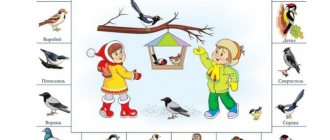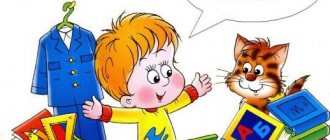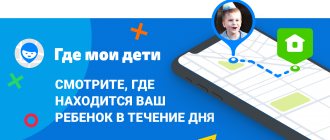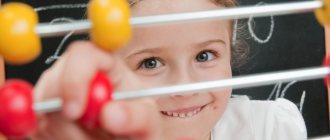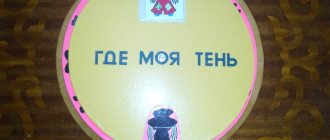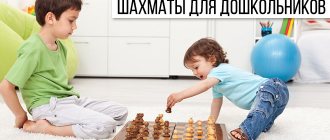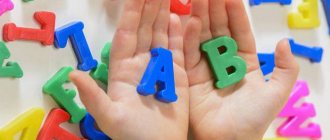To be fair, it should be noted that with a child of senior preschool age the alphabet and letters can be learned much faster than with a toddler in the first two or three years of life.
Therefore, many parents think that the game is not worth the candle. On the other hand, with early learning, letters enter the child’s life quite naturally, that is, he simultaneously learns “that this bird is called a duck, and this letter is A.” And if you approach the learning process without fanaticism, trying to present everything in a playful form, then the child will become interested in everything related to letters and, subsequently, reading. We must clearly understand that early development is not needed in order to be able to boast to relatives and friends that a baby knows all the letters at 1.5 years old, and can read at 3 years old. Also, early acquaintance with letters will not turn a toddler into a child prodigy, it will only help develop his natural abilities, and will also become a fun and useful way to spend time together.
Learning letters: where to start
In what order should I learn the letters? Do you need to learn the alphabet? Should I start with vowels or consonants?
Let's be clear, so:
1. There is no need to learn letters in alphabetical order.
2. Don’t learn letters mixed up: vowels and consonants.
3. Be the first to learn 10 letters representing vowel sounds with your child.
We wrote in detail about how to learn 10 vowels in 5 lessons. The technique is really very effective and simple. Any mother can do it.
4. It is better to learn consonants after vowels.
5. Name the sounds, not how the letter is pronounced in the alphabet.
Interactive technologies for teaching letters
Progress is taking place by leaps and bounds, so now parents have every opportunity to use interactive educational games. Children enjoy learning letters interactively, as it is very educational and interesting.
Talking alphabet for children
The educational alphabet for children not only gives an idea of the letters, but also pronounces them independently. To do this, you just need to press a button. The good thing about the process is that the child can press the buttons independently.
Teaching mathematics in kindergartens using counting material
For your information! The gadget is designed in a bright style and attracts attention. There may be different sizes and pictures. The poster should hang in a visible place, attracting the child's attention.
When a child presses a button, he hears both the desired letter and a certain word. Extended versions can be supplemented with various melodies or rhymes. Everything is done so that the children's brain learns the language better.
There is a symbiosis that combines teaching the alphabet and numbers. It has the same principle, but is complemented by a digital panel. For example, when you press the “3” button, the number three is announced. There are modifications in the form of full-fledged books. Using them, the child will also be able to study online.
Posters are usually touch sensitive and run on batteries. Overall, it helps children develop knowledge and makes the parent's task easier. Can be used both as a main and an auxiliary element.
Talking alphabet for children
The speaking alphabet has a similar meaning, but is aimed at learning the alphabet.
For your information! In this poster, the letters are in the correct order. The device works on a similar principle. Can have built-in volume controls and declare poems.
The choice depends solely on the baby’s parents.
Letter cubes
How to teach a child the alphabet at 3-4 years old
If you decide to teach your child letters at 3 years old, remember that nothing can be done through force, only games, only entertaining exercises and NO FORCE. These recommendations are relevant for any age, because you do not want to develop an unwillingness to learn and go to school in the future.
- Don't expect your child to remember many letters right away. Don't set out to learn the entire alphabet; it will take time.
- Give your child new material twice a week, and on the remaining days, repeat and consolidate what you have learned.
- With a child 3-4 years old, it is enough to exercise 2-7 minutes a day.
- Learn vowels in pairs, so it will be easier for your child to remember: A - Z, O - Yo, U-Yu, Y - I, E - E.
- Before introducing your child to consonants and starting to learn to read, make sure that knowledge of all vowels has been brought to automaticity.
Reasons why a child may not pronounce letters
Incorrect pronunciation of letters may be due to improper upbringing. If parents, when communicating with their child, change their voice, lisp or babble, then the baby gets used to such communication and his incorrect pronunciation of letters is reinforced.
Therefore, you need to speak to your child in correct and clear language. Immediately stop the slightest shortcomings in your baby’s speech, because with age it will be several times more difficult to correct them.
Wrong attitude towards spoken language. There is an opinion that learning to speak occurs without intervention from adults. But if parents do not participate in the process of developing the child’s speech, then over time the child’s lag in speech development will begin to appear.
How to learn consonants: a game technique
There are many more consonants than vowels. Studying them will require more patience, effort and time. But everything will work out if you strictly follow the recommendations and take your time.
Prepare a table. Each table consists of six rows. On the top line, write or type hard consonants in blue and soft consonants in green. On the remaining lines, write short open syllables.
| BY | |
| BO | BYO |
| BOO | BYU |
| WOULD | BI |
| BE | BE |
| VYa | |
| IN | WHAT |
| VU | VYU |
| YOU | IN AND |
| VE | BE |
| GY | |
| GO | GYO |
| GU | GY |
| Gee | GI |
| GE | GE |
| DY | |
| BEFORE | DE |
| DU | DU |
| YES | DI |
| DE | DE |
| ZY | |
| ZO | ZY |
| memory | ZY |
| PS | ZI |
| ZE | WE |
| LA | |
| LO | LE |
| LU | Best Junior |
| LY | LI |
| LE | LE |
- Together with your child, sing songs of vowel sounds: in a rough low voice A, O, U, Y, E and in a high thin voice I, E, Yu, I, E.
- Say the consonants in the top line of the chart clearly. Work with 6 tables in each lesson.
IMPORTANT! Make sure that the child and you yourself pronounce the consonants clearly, so that no extraneous vowels Y or I . If the child gets used to saying D y, S y instead of the pure sounds D , S , then he will read incorrectly. The most difficult things to pronounce are the pure sounds B, V, G, D; B, B, G, D. The rest are easier, especially the deaf. Z and ZH correctly for example, is very simple. Ask your child: “How does a big mosquito buzz? Z-Z-Z. No, not Z s, but Z-Z-Z! The mosquito does not know how to say Zy , it does Z-Z-Z . How does a small mosquito buzz? ZZ-ZZ-ZZ . Komarik does not know how to say Z and, he does Z-Z-Z-Z . This is what we call these letters: Z-Z-Z and ZZ-ZZ-Z .”
- Sing the syllables in the same way as you did with the vowels.
- b in the tables and tell them that it is called a “soft sign.” Remind him of its name from time to time.
The letter b does not indicate a sound, but only INDICATES the softness of the consonant.
- Write Y . Name what this sound sounds like. Give examples of words that begin with this sound: iodine, yogurt, yogi.
the very name of the letter “ And short” later when he learns the alphabet. From time to time, remind your child about this letter by PRONING IT WITH A SOUND.
- Return to these tables several times a day and sing the warehouses with your child. Do this regularly.
- When you see that the child is doing everything correctly, replace the 2 tables with two new ones.
| MY | |
| MO | MIO |
| MU | Manchester United |
| WE | MI |
| ME | ME |
| AE | |
| BUT | NOT |
| WELL | Nude |
| WE | NI |
| NE | NOT |
The technique is the same. Sing all 6 tables daily with your child. As a result, the child will repeat the old ones and learn 2 new letters.
- Again replace the 2 tables with two new ones, etc.
If you stick to the plan “new things 2 times a week, repeat the rest of the days,” your child will learn 32 letters of the Russian alphabet in a month. Ъ to your child later, when he begins to read and encounters this letter in words.
IMPORTANT! In the Russian language there are twin sounds and warehouses: ZH-ZH, ZH-ZHYO, SH-SH, SHO-SHYO, CH-CH, CHO-CHE, SHCH-SHCH, SHCHO-SHCHYO, TSY-QI . They are spelled differently, but sound the same! Be sure to draw your child's attention to this.
Teaching a child to pronounce sounds
There are many different techniques for correct speech production of a baby. But many parents do not know how to teach their child to pronounce letters at home, and therefore immediately turn to speech therapists for help. Although this problem can often be solved at home. You just need to approach the organization of classes correctly. Parents should remember that they should not overload the baby; the duration of each lesson should not exceed 15 minutes. If the child shows reluctance to study, postpone the lessons for a while. By forcing a child to pronounce letters by force, you can forever discourage him from speaking correctly and learning in general.
Before each lesson, it is necessary to sit the child down, making sure that he sits upright. All distracting objects are removed, the TV is turned off. An excellent option would be to practice in front of a mirror so that the child can see not only the articulation of the adult sitting in front of him, but also his own.
Expert Tips: How to Learn the Alphabet
Parents are constantly looking for new, quick ways to learn the alphabet with their child, but fast does not mean quality.
Additional Information! For a comfortable study, you should not forget about the peculiarities of the physiology and psychology of children (age and characteristics of their thinking).
Baby studying
Why teach your child the alphabet?
The alphabet is the basis of all languages. This is a strict sequential construction of letters, which is the key to all documents and books.
Knowing the alphabet will do nothing for a small child. He can easily memorize it, but he will not learn to read. It is better to leave the alphabet for elementary school, where it is needed, and learn the letters with your child without a strict sequence.
At what age should children already know all their letters?
The required level of brain development for reading is usually formed by 5 years, less often by 4-5. Therefore, there is no point in trying to force a child to read at an earlier age. It is better to broaden your horizons, develop speech and pronunciation, teach you how to ask questions correctly and teach you to give answers.
Taking into account age characteristics when learning about letters
In young children, the visual-effective type of thinking dominates, and upon reaching the age of five, the brain will begin to actively perceive iconic images and abstract presentation of information.
Note! By the age of 4, a child must learn basic knowledge for a comfortable future life. He focuses his attention on social connection with the world, so it is not recommended to burden him with unnecessary and complex information, bringing him to tears.
Learning the alphabet
Any activity with your baby is a fun game
Kids cannot concentrate on one activity for more than 10-15 minutes, so the duration should be limited, otherwise attention will be scattered and the child will stop learning new information.
A standard academic lesson is not suitable for children, so you should try to present any learning as an unobtrusive game that will be interesting to him. It is better to use a variety of tasks:
- poetry;
- songs;
- tongue twisters and riddles.
Note! This will provide the child with immersion in the process and facilitate the perception of new knowledge.
Methods for learning the alphabet
There are several popular methods for teaching children to read and memorize the letters of the alphabet. You can use them, especially since experts worked on them. But, no matter what method you work with, it is important to remember that your classes should not resemble lessons at school.
Children at this age need to play and get the information they need through games. Therefore, after a short educational part, immediately move on to an interesting, gaming part. Creative activities are also very useful, with the help of which you not only learn letters, but also develop the child’s fine motor skills, improve his drawing and coloring skills, and strengthen the ability to use scissors.
Games and play exercises
There are a huge number of game exercises that will help you consolidate your knowledge. We will give a few as examples.
1. Find words with the right sound . You need to prepare cards that show different objects. The child must choose among them those that contain the sound being studied. First, you can simplify the task: ask him to find words starting with this letter.
2. Catch the sound . To warm up a little, mother and child walk around the room. Mom says different words. As soon as the child hears a word with the desired sound, he stops and claps his hands.
3. Come up with a word . Ask your child to come up with as many words as possible with a certain sound. You can do this in turn, for example, first the mother says the word, then the baby.
The task needs to be made more difficult, that is, the sound can be not only at the beginning of the word, ask him to come up with a word in which this sound will be at the end or in the middle. For example, you are learning the sound “a”. First, select words that begin with this letter - apricot, orange, then those that end in “a” - Moscow, jellyfish or contain the sound “a” in the middle - mosaic, eye.
4. Determine where the sound is hidden . You need to draw a simple diagram of the word: three squares connected to each other. Each square represents its own: the beginning of the word, the middle and the end. Place this word diagram in front of the child and give him the chip.
You name different words, and he should show on the diagram where the sound you are going through is located. For example, if you named the word “watermelon” (you can show a picture), the child should put the chip in the 1st cell, and if the word “fox” - then in the 3rd cell.
5. Playing with the ball . An adult throws a ball to the child and says different words. If they contain the letter being studied, he catches the ball, if not, then he does not catch it. To begin with, you can use words in which this letter is at the beginning, then complicate the task, that is, it can be in the middle or at the end.
Author's methods for learning the alphabet
There are several recognized methods of teaching reading, each of which can be devoted to a separate article.
Zaitsev cubes
The basis of Zaitsev’s method is play, that is, children simply play with cubes (there are 52 cubes of different sizes in a set) and at the same time learn to read without making any effort. These games can be started from 6-12 months, but until 2 years old they are used like regular blocks, and children after 2 years old can begin to form words.
Zaitsev's main unit is a warehouse. It can consist of a consonant and a vowel, or of one letter. The basis of this method is the warehouse principle of reading. In addition to the cubes, a large storage table is also used.
This technique has many advantages, the main one of which is that any child can be taught to read. But there are also some disadvantages, for example, over time, children will have to be retrained, because they remember that letters are indicated by one color, and the teacher introduces his own colors, for example, red is a vowel letter. In addition, the child is accustomed to the fact that words are divided into clauses, and not into syllables. And benefits are very expensive.
Doman cards
Neurosurgeon Glen Doman developed his technique for children with central nervous system disorders, but then they began to use it to teach healthy children. He recommends teaching children to read not by letters, but by words, since letters mean nothing to him, and words have real meanings.
To do this, whole words are written on cards in large font (at least 7-10 cm), for example, “mom” or “dad,” which must be quickly shown to the child, voicing each word. Using this method, you can teach even a small child to read. Training must be carried out at an early age; after 5 years, Glen Doman’s method no longer works.
Methodology of Olga Soboleva
The principle of this training is based on the “bihemispheric” work of the brain. The teacher tries to use the dominant type of memory, that is, the material is divided into 3 groups: for kinesthetic, visual and auditory learners.
Many of its techniques are also used by ordinary teachers when teaching traditional methods to make it more interesting for children to study. Good for creative children and parents, it is not recommended for families where logic and structure come first.
Polyakov's technique
Its author came up with 7 steps of learning to read, a total of 70 lessons. Each lesson is described in detail. They are conducted in a playful manner and take no more than 10 minutes. Stages 1 and 2 are the study of letters, spellings, reading by spellings.
Sergei Nikolaevich Polyakov himself, unfortunately, is no longer alive, but his work was continued by his son, as well as teachers who practice this method. If you wish, you can purchase books that describe in detail how to conduct classes, as well as video files with examples of classes.
Learning through games
Reading skill requires constant training. To make it easier to remember what you read, you need to look at pictures in books and discuss situations. To show your child what books are and how interesting it is, you need to play:
- Game for mastering letters . Together with your child, come up with images for the letters that he will play with. All images should be memorable and bright. It is possible to make cards with letters with images of animals yourself.
- Games for adding syllables . At the base, make circles with written syllables and pictures that show the baby which word needs to be added. For example, you can make a picture of a river. The kid chooses two circles. One says RE, and the other says KA. Or a picture of porridge. There are also two pictures, where on one is KA, and on the other is SHA.
- Games to develop reading skills . There is a game “Word”, which involves making up words from syllables and letters mixed up. you can come up with situations, for example, Ira wanted to give her granny gifts and wrote them down. But a hurricane suddenly hit and mixed everything up. We need to help Irochka remember what she needed to give to grandma by composing and mixing up the syllables of the word.
Associations
This game can add variety to activities with cubes or cards. For example, the letter “F” looks like a “bug” - you can add antennae and eyes to it on a card, or invite the child to do it himself.
The letter “D” can become a “house”, acquire a painted window and a pipe. This fun method can help not only quickly learn the alphabet, but also develop the creativity of a preschooler.
However, there are a number of pitfalls here. Teachers working with preschoolers note that in this case there is a risk of learning not the sound, but the proposed association itself, in which the letter “D” turns into the letter “house”. Therefore, this method will be good in combination, as a pleasant relief after “standard” learning the alphabet.
Electronic poster “Talking ABC”
The educational sound poster is a great addition to standard alphabet learning techniques.
It combines visual and audio perception, allowing you to learn the letters and sounds of the alphabet, as well as numbers from 1 to 33. The poster features several modes - song, riddle or task, which allows you to diversify the learning process.
The posters differ in sound and pronunciation principles. It is recommended to choose those where there is a pronunciation of letters as sounds.
Learning the alphabet is an important step in the life of every child, which will allow them to gain new knowledge and analyze it. It is worth treating this period with patience and helping your child learn through a playful approach and support.
Magnetic alphabet
Another one of the most common ways to teach a child letters. Surely many young parents had such magnetic boards when they were children.
You can work with the magnetic alphabet, just like with cards: each time, attaching a letter to the board, show it to the child and clearly pronounce it, vowels in a sing-song manner, consonants - clearly pronouncing their sound. After the child has memorized the vowels and consonants, you can move on to learning the alphabetic sequence and syllables.
